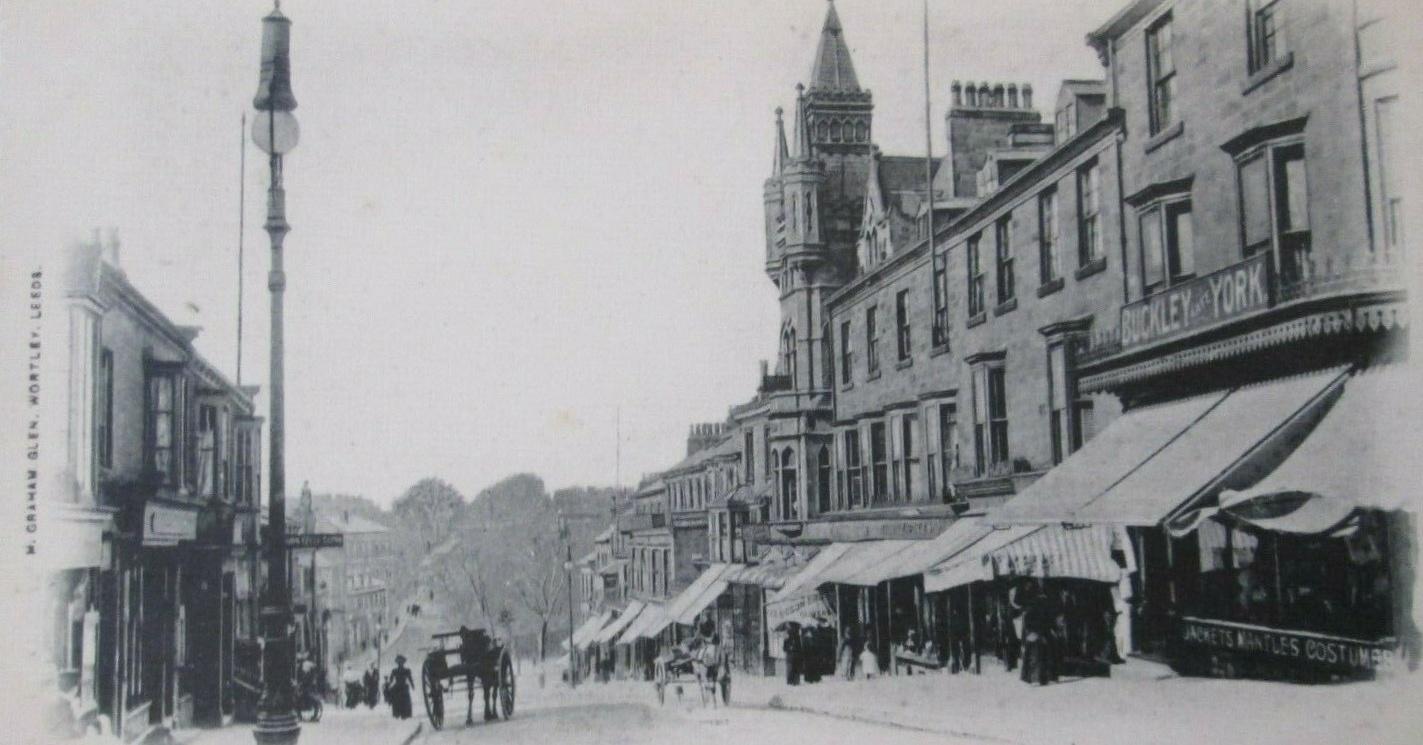Subscribe to trusted local news
In a time of both misinformation and too much information, quality journalism is more crucial than ever. By subscribing, you can help us get the story right.
- Subscription costs less than £1 a week with an annual plan.
Already a subscriber? Log in here.
06
Feb 2021
History: Remembering Debenham's, Busby's and Buckley's

This History is written for the Stray Ferret by Harrogate historian Malcolm Neesam:
It was with great sadness that I learned of the pending closure of Debenham’s Parliament Street store, which I recall visiting as a small boy in the early 1950s when it still retained the name of its original founder, William Buckley.
From the middle of the 19th century, the site at the northern junction of Parliament and Chapel (now Oxford) Streets had been occupied by a photographer's studio, the property’s address being 22 Parliament Street, which was occupied by a draper named Charles York.
On his retirement in 1900, Mr York sold his business to a young draper from Nantwich, William James Buckley, who was attracted to Harrogate by the business potential offered by the fashionable and expanding borough. A later observer noted that William Buckley had been apprenticed to the drapery business from an early age, where he had learned that honesty and fair dealings were the basis for successful business.
The shop at 22 Parliament Street was well placed to catch the eyes of visitors to the Royal Baths, as the Wintergardens were located on the opposite side of the road, and thanks to some shrewd buying and displaying by Mrs Buckley, the display windows were filled with the latest fashions in jackets, mantles and costumes.
By 1909, the business was doing so well that Mr Buckley was able to extend his premises by adding a number of ancient and dilapidated properties in Oxford Street, including several highly picturesque buildings ranged round a courtyard and reached through an archway. These were demolished, and a new wing added, built of red brick, and featuring some handsome leaded windows of stained glass of an arts and crafts design. The only other brick buildings in central Harrogate were the 1862 Central Railway Station, the Hotel Majestic and the Grand Opera House, both of 1900, and the 1902 Beulah Street head-building of the central arcade, all of which have survived to this day, although only a small fragment of the Railway Station has survived the wreckers.
Buckley's Parliament Street frontage was given a handsome pavement canopy of glass and iron, which was not only an invaluable means of encouraging pedestrians on a wet day, but which was also an embellishment to the street scene. In 1910 Mr Buckley bought 24 Parliament Street, where for many years Messrs Phillipson Ltd carried on a musical instrument dealers. There will still be piano stools scattered around Harrogate that contain music scores supplied by Messrs Phillipson Ltd.
After the Great War, Mr Buckley decided to rebuild the Parliament Street section of his business, and in1919, transferred the entire undertaking into the Royal Arcade at number 32, which he had leased in 1914-15, for the period of construction. After moving back into his rebuilt premises, Mr Buckley sold the Royal Arcade to Charles Walker and Son Ltd, who, after adding a handsome scalloped glass canopy over the entrance, installed Harrogate's finest furniture store in the premises.
The new Parliament Street section of the store matched the 1909 wing, being of red brick with stone finishings around the windows. In those days, all the windows admitted light to the store, causing the delightful stained glass panels to reveal their colouring, an effect lost in the 1980s when Debenham’s blacked out all their windows, giving the interior a gloomily funereal atmosphere.
The rebuilt Buckley's store was fitted throughout with a marvellous system of aerial wires that criss-crossed each floor carrying canisters containing money and receipts. They seemed to have been powered by a trigger mechanism that sent them whizzing round at high speed, and which were a most efficient means of dispensing change. Mr Buckley undertook a further extension in 1927 when he purchased the premises at 28 Parliament Street, then occupied by a popular cafe "The Lounge", which had been much frequented by the town's business people.
By the end of the decade, Buckley's employed 130 staff, a considerable increase on the five employed back in 1900. The successful business caught the eye of Gordon Selfridge, who, in 1934 purchased it on behalf of Selfridge Provincial Stores Ltd, and when Mr Selfridge visited Buckley's on January 25, 1934, he thanked the staff for their loyalty and advised them that Mr Buckley had been invited to join the Board of Directors, to ensure the preservation of such an important link. Two years later, in 1936, the company acquired the premises of fishmonger JW Bentley at 36 Oxford Street, which meant that Buckley's store now filled the entire corner site between Parliament Street and Union Street. Part of the Union Street property included the original St Peter's School, which was used as a staff restaurant and joiners' workshop.
Selfridge Provincial Stores was acquired by the John Lewis partnership in 1939, who in 1940 decided to enlarge the store by adding the premises at 30 Parliament Street, formerly occupied by Miss Edith Ingram's Needlework business. At midnight on Saturday, December 27 1941, a fire broke out in the Parliament Street section of the store formerly occupied by "The Lounge" cafe, and because of the national emergency, it remained in a burnt-out state until the end of the war.
In September 1953, Buckleys was acquired by Messrs Busby of Bradford in September 1953, who changed the store's name to Busby's - this was seven years after the death of WJ Buckley. 1958 saw Busbys pass into the hands of Debenhams Ltd, who planned a major rebuilding of the Parliament Street properties between the 1919 section and the premises of Charles Walker in what is now the Westminster Arcade. Work began in October 1960, and the new store was officially opened by Mayor G Morrell on Wednesday, November 21, 1962. Architect Victor Syborn showed his respect for the arts and crafts style of the pre-war store by providing a dull facade of pre-fabricated blue and cream rectangular panels, and by replacing the ornate glass-roofed Victorian canopy with a gloomy solid-roofed cantilevered canopy that darkened both the pavement and the shop windows.
At one time, all of Harrogate’s top businesses advertised their prestige by erecting beautiful iron and glass canopies over their frontages, which encouraged pedestrians to examine their window displays – examples being Bettys, Fattorini's, Hoopers, Jespers, Ogdens and Wood. Buckley’s/Busby’s was another example, until it was ruined, so it would be a real embellishment to Parliament Street if whoever buys the building could restore the lovely original canopy, and open up the stained glass windows. Malcolm Neesam was born in Harrogate and graduated from the University of Leeds as a professional archivist and librarian. He subsequently worked in Hereford, Leeds, London and York where, for twenty-five years, he was North Yorkshire’s County Music and Audiovisual Librarian. Malcolm is a much-published author. In 1996, Harrogate Borough Council awarded Malcolm the Freedom of the Borough for his services as the town’s historian.
Malcolm Neesam was born in Harrogate and graduated from the University of Leeds as a professional archivist and librarian. He subsequently worked in Hereford, Leeds, London and York where, for twenty-five years, he was North Yorkshire’s County Music and Audiovisual Librarian. Malcolm is a much-published author. In 1996, Harrogate Borough Council awarded Malcolm the Freedom of the Borough for his services as the town’s historian.
0